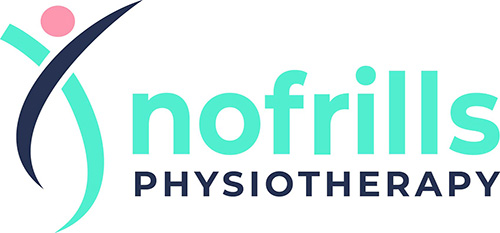Services
Workplace Health for Fewer Ache and Pains
Firstly, as part of Functional Wellness, Workplace Health or Office Ergonomics is a crucial step towards preventing musculoskeletal problems and pains.
Workplace Safety & Health
The World Health Organization has identified the workplace, alongside schools, hospitals, and marketplaces, as a key setting for health promotion in the 21st century. Consequently, the concept of a health-promoting workforce is gaining traction, as organizations increasingly realize that success in the marketplace relies on having a healthy, skilled, and motivated workforce.
Ergonomic Services
At Core Concepts, we offer a range of health programs that include informative talks, on-site assessments, and evaluations. Most importantly, we customize these programs to meet the specific needs of various industries, ensuring that your workforce receives the most relevant and effective support.
Workshop and seminars
Ergonomic Site Assessments
Musculoskeletal Health Screening
Functional Capacity Evaluation (FCE)
Back Pain Epidemic
The 2012 Global Medical Trends study by Tower Watson identified Musculoskeletal/Back Conditions as the fifth most prevalent cause of medical claims globally. These issues often arise from common workplace activities, such as prolonged sitting in an office chair or heavy lifting.
Implementing ergonomic principles—focused on optimizing the workplace for the worker—can significantly reduce the risk of work-related back pain and injuries, promoting a healthier back.
In summary, an effective ergonomics program aims to tailor the workplace to the individual worker, taking into account their job responsibilities, required tasks, and physical characteristics. This personalized approach not only enhances comfort but also supports overall well-being and productivity.

Relaxation And Posture Exercises
In a study led by Professor Franco Mongini from the Headache and Facial Pain Unit at the University of Turin, staff in the study group were instructed to perform a series of relaxation and posture exercises every two to three hours. They were also given red labels to place around their workspaces as reminders to avoid excessive tension in their neck and shoulder muscles.
The program included two daily sessions where participants would relax for ten to fifteen minutes at home in a comfortable chair, using warming pads on their cheeks and shoulders. To facilitate understanding, a short film was shown, followed by practical demonstrations and training sessions. Participants also received information sheets outlining the exercises, and the clinician revisited the workplace at four and six months to reinforce the procedures.
The study and control groups were situated in separate offices to prevent cross-contamination of results. Of the 384 employees who participated, 90 percent completed the study, with 80 percent being female and an average age of 46.
“Headache and neck and shoulder pain present significant clinical challenges and are major health issues,” notes Professor Mongini. The research was primarily funded by the Compagnia di San Paolo in Turin, with additional support from Region Piemonte.
Office Initiative Reduces Headaches And Neck And Shoulder Pain By More Than 40 Percent
Italian researchers compared 169 staff in Turin’s registry and tax offices with 175 colleagues who hadn’t taken part in the educational and physical programme. They compared the baseline results for months one and two of the study with months seven and eight to see if there had been any changes. They did so by using daily diaries completed by both groups. The study group started following the programme in month three.
They found that:
- Staff in both groups reported an average of six headache days a month and seven and a half days when they were affected by neck and shoulder pain. They needed to take analgesic drugs two days a month.
- By the end of the trial, staff in the study group reported that they suffered from 41 per cent fewer headaches. Staff in the control group reported a negligible rise of 0.02 per cent.
- Study group staff also reported 43 per cent less neck and shoulder pain. In comparison, staff in the control group reported a five per cent reduction.
- When it came to medication, the study group reported a 51 per cent reduction in analgesic use. The control group reported a fall of 15 per cent.
- Subjects with anxiety or depression showed a better than average response when compared with the rest of the study group.
Other Impacts
The researchers were also keen to see whether the workplace initiative also reduced the ‘global burden of the employee’s headaches and neck and shoulder pain. This is calculated by multiplying intensity by frequency. They found that:
- Employees in the study group reported a 41 per cent reduction in headache burden. There was a two per cent fall for the control group.
- The burden of neck and shoulder pain was 54 per cent lower in the study group. The control group recorded a reduction of four per cent.
What Does This Mean For Workplace Initiative?
“Last year Cephalalgia published a study by Stovner et al that suggested that the worldwide prevalence of headache was as high as 46 per cent in adults, with 11 per cent suffering from migraine, 42 per cent from tension headaches and three per cent from chronic daily headaches.
“Our study clearly shows that workplace interventions can reduce headaches and neck and shoulder pain.
“The methods adopted were relatively simple and the positive response from the employees, including the low study drop-out rate, suggest that it would prove popular in other workplaces.”
“We also believe that employers would support this low-cost initiative as it would improve productivity in the workplace.”
Reference:
- Effectiveness of an educational and physical programme in reducing headache, neck and shoulder pain: a workplace controlled trial. Mongini et al. Cephalalgia. 28, 541-552 (May 2008).
Office
279 Tanjong Katong Road
Singapore 437062
Monday to Friday : 9am – 8pm
Saturday : 10am – 7pm
Sunday : 10am – 6pm
Services
Knee Pain
Shoulder Pain
Neck Pain
Elbow and Wrist Pain
Ankle and Foot Pain
Stretch Therapy
Sports Therapy
Women's Health
Contact
(+65) 9007 1085
hello@nofrillsphysiotherapy.com
Address: 279 Tanjong Katong Road
Singapore 437062
Other Physiotherapy Services
Shockwave Therapy
Dry Needling
Sports Massage
Functional Fitness
Workplace Health
